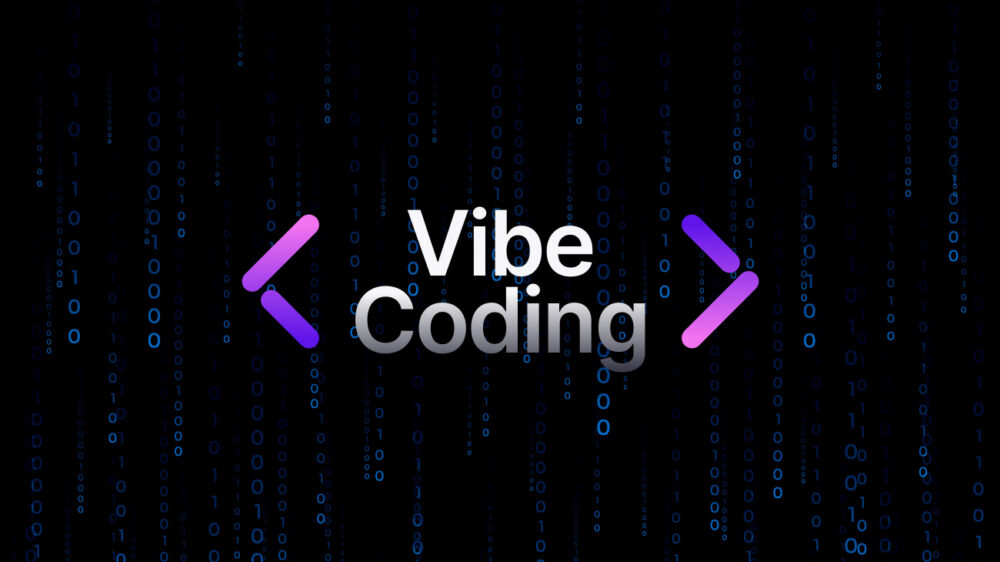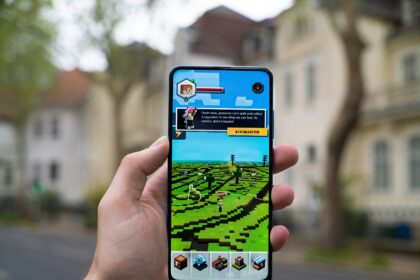In the fast-moving world of software development, every few years, a shift occurs that redefines how developers build. In 2025, that shift is happening now, and it goes by the name “Vibe Coding”. Coined by AI researcher Andrej Karpathy in early 2025, the term has quickly grown from a quirky label into a core philosophy that is gaining real traction in how we think about coding in the age of artificial intelligence.
But what exactly is vibe coding? Why is it taking the tech world by storm? And why are startups, engineers, and tech giants alike racing to embrace this new paradigm? Let’s break down the frenzy, and what it means for the future of software.
What is Vibe Coding?
At its core, vibe coding refers to an AI-assisted development process where developers write software by “vibing” with a code-generating model. Instead of manually typing out every line, they describe what they want in natural language prompts, and the AI generates, iterates, or modifies the code.
The feedback loop is conversational, intuitive, and fast, hence the term “vibe.” Unlike traditional coding or even earlier stages of prompt engineering, vibe coding is less about rigid instructions and more about co-creating with a model. The developer’s role becomes that of a creative director or collaborator, nudging the AI toward a desired outcome. And just like a jam session with a bandmate, there’s rhythm, revision, and real-time improvisation.
Cursor, Claude, and the Tools Leading the Vibe Revolution
The frenzy around vibe coding is not abstract, it is anchored in real tools that developers are already using. Cursor, a YC-backed AI coding environment, has become the flagship platform for vibe coders. It wraps the power of ChatGPT or Claude in a familiar IDE-like interface, allowing devs to write, explain, and revise code through conversation.
With features like Context Windows, code-aware memory, and AI Agents, Cursor has made coding as fluid as chatting.Startups like Lovable, backed by $18 million in seed funding, are also pushing the boundaries by letting non-technical users build full-stack apps via natural language. Meanwhile, Replit Agents and GitHub’s Copilot Workspace are expanding what AI pair programming looks like.
These tools represent the backbone of vibe coding workflows: conversational, contextual, and increasingly autonomous. According to Y Combinator’s Winter 2025 batch report, nearly 25% of startups are already shipping products built almost entirely with AI-generated code. That is not just a start, it’s a revolution in how software is made.
Why Developers Are Embracing the Vibe
There are several reasons why vibe coding is gaining traction at warp speed. First, it lowers the barrier to entry. Beginners and no-code users can build full applications with minimal syntax knowledge. Second, it accelerates prototyping, especially for startups where speed is survival.
And third, it supports creative exploration, allowing developers to try new architectures, languages, or features without needing deep technical mastery from the get-go. In many ways, vibe coding is doing for software what Canva did for design or what TikTok did for video: making the creative process more accessible, faster, and collaborative. Developers are no longer working for the codebase, they’re shaping it like clay, with the AI as their co-sculptor.
Vibe Coding vs Agentic Coding
As the term spreads, so does the nuance. Some in the community are beginning to differentiate vibe coding from agentic coding. While vibe coding is conversational and flow-based, focused on getting ideas out quickly, agentic coding refers to autonomous agents that can execute tasks end-to-end with minimal human intervention.
Think of it this way: vibe coding is like pair programming with an AI. Agentic coding is like hiring an AI developer. Both have their place, but the vibe coding ethos is more grounded in creativity, iteration, and control.
What Startups and Enterprises Are Doing With Vibe Coding
The use cases for vibe coding are multiplying. Startups are using it to ship MVPs in record time. AI-native companies like AnySphere (makers of Cursor) are reporting user retention rates comparable to top-tier SaaS products.
Meanwhile, enterprise companies are testing vibe workflows for internal tools, low-priority automation, and even customer support applets, reducing both development cost and time-to-deploy. Amazon’s Q Developer, for instance, allows engineers to query internal knowledge and write infrastructure code in a conversational format.
In a recent interview with Business Insider, AWS VP Deepak Singh said, “This isn’t just AI-enhanced coding, this is a rethinking of the developer experience.”
Related: Don’t Know Code? No Problem. Google is Testing Opal a Tool That Builds Apps from Prompts.
The Security & Ethics of Vibe Coding
Of course, any frenzy comes with its own risks, and vibe coding is no exception. Experts are raising valid concerns around code security, vulnerabilities, and IP ownership in AI-generated code.
A report by TechRadar Pro highlighted security flaws in some vibe coding platforms where AI models inadvertently exposed sensitive logic or created exploitable endpoints.This has led to the emerging discipline of vibe security, protocols and tools designed to audit, test, and secure code generated in these new workflows.
As AI coding becomes mainstream, developers and organizations must remain vigilant about validation, oversight, and explainability.
Why the Frenzy is Just Beginning
At a macro level, the rise of vibe coding is about more than just better tools, it is about a cultural shift. Developers are no longer just builders; they’re composers, crafting solutions in real time with AI as their assistant.
The future of software development is not just low-code or no-code, it’s natural language code, built in context, by teams that vibe. As the models improve and agentic workflows evolve, we may see the lines blur further, where vibe coding becomes not just a way to build apps, but a new mental model for collaboration, creativity, and coding itself.
According to Arxiv’s latest AI DevOps research, by 2026, nearly 40% of new software products will involve natural language interaction at some point in the development lifecycle. That is a wave that no engineer or product team can afford to ignore. The frenzy about vibe coding isn’t hype, it is a reflection of a genuine transformation in how software is imagined, designed, and delivered. From AI-powered prototyping to intent-driven programming, vibe coding is making development faster, more intuitive, and more accessible to a broader audience.
But it is not just about ease or speed, it’s about changing the vibe of software engineering itself. For anyone building in 2025 and beyond, the question is not whether you should adopt vibe coding, It is how fast you can catch the rhythm.







